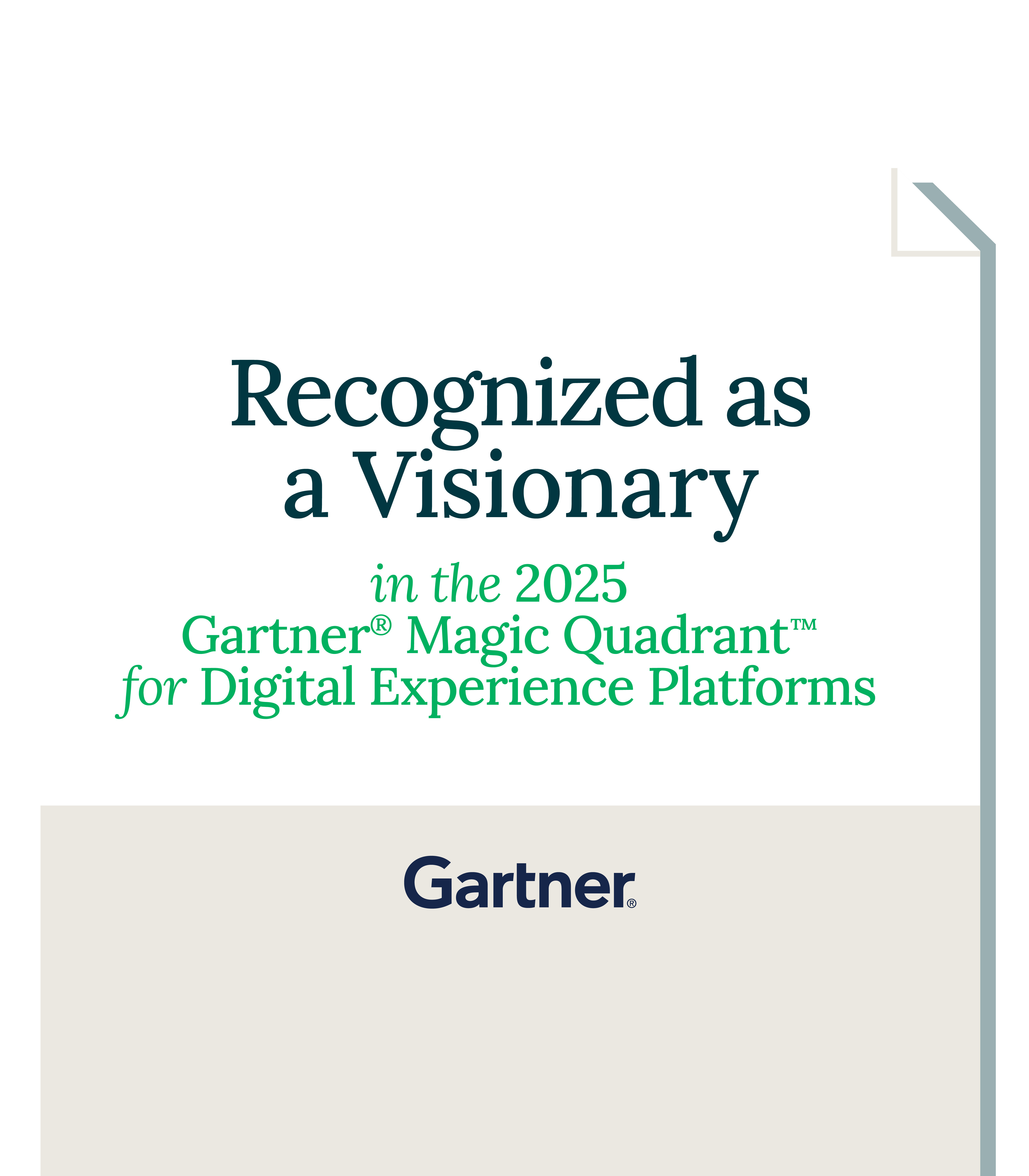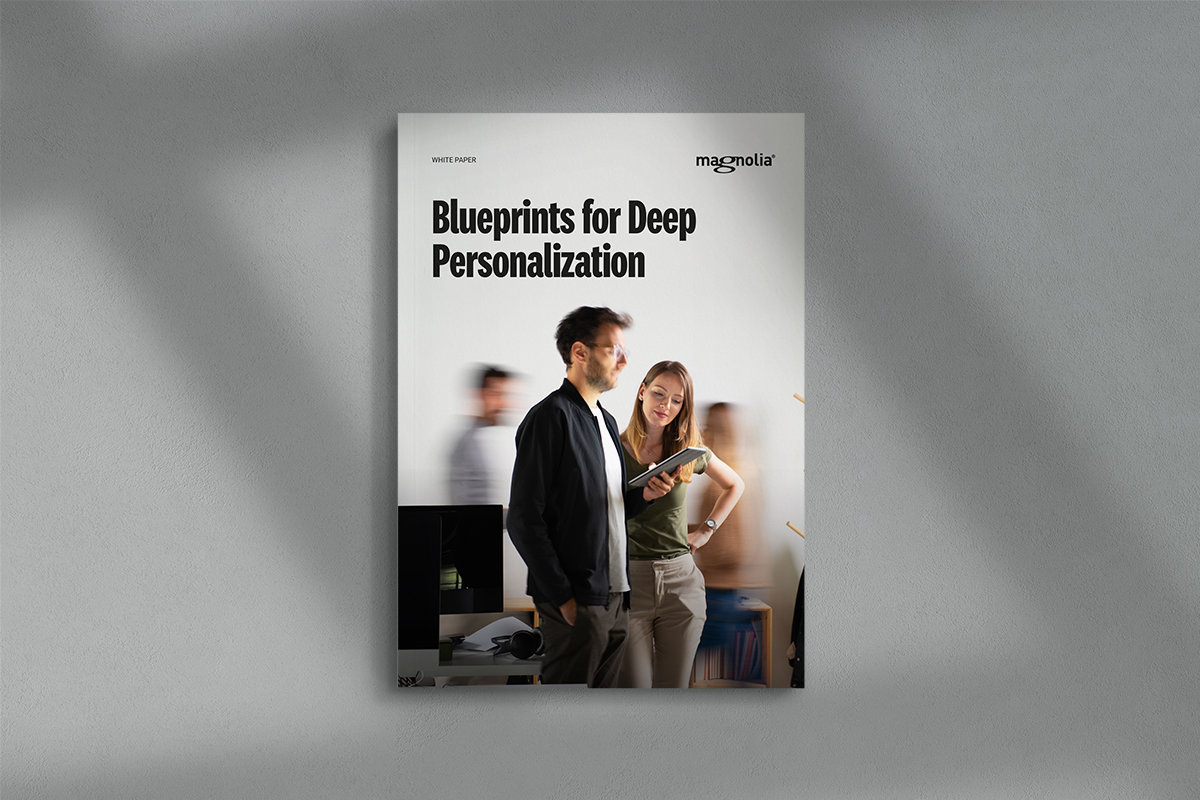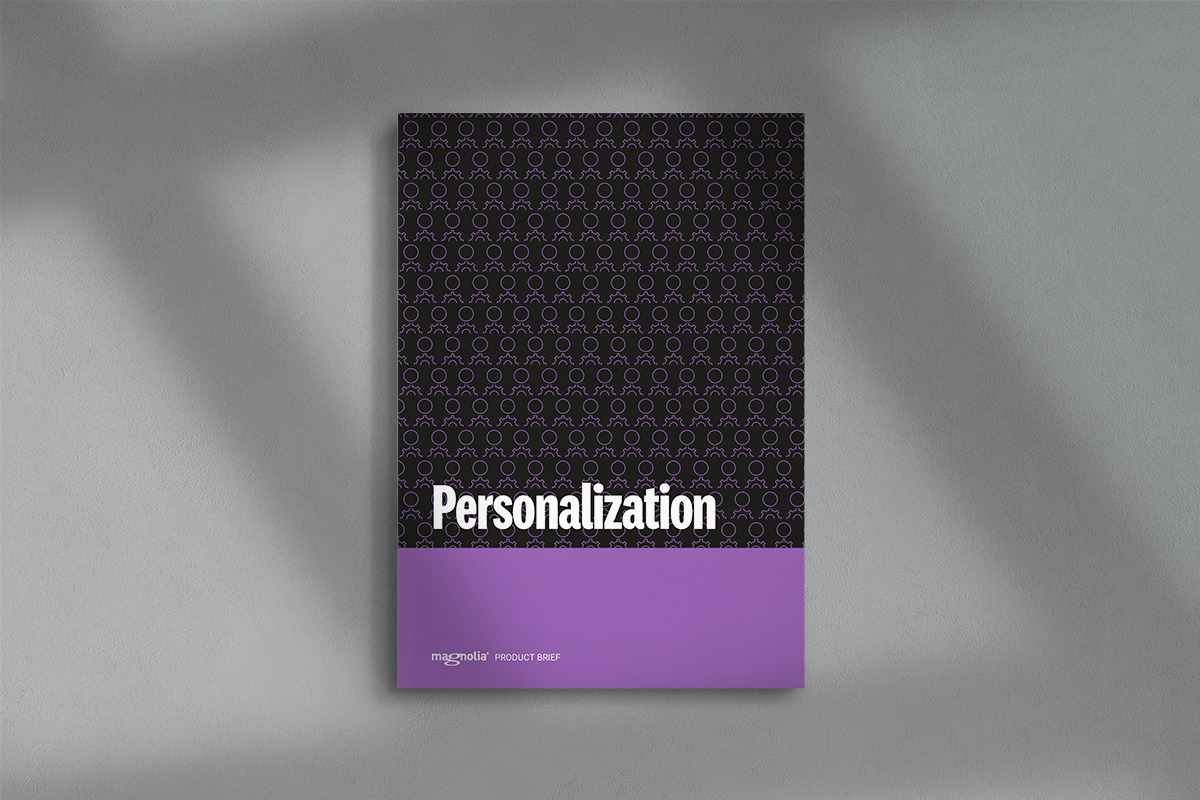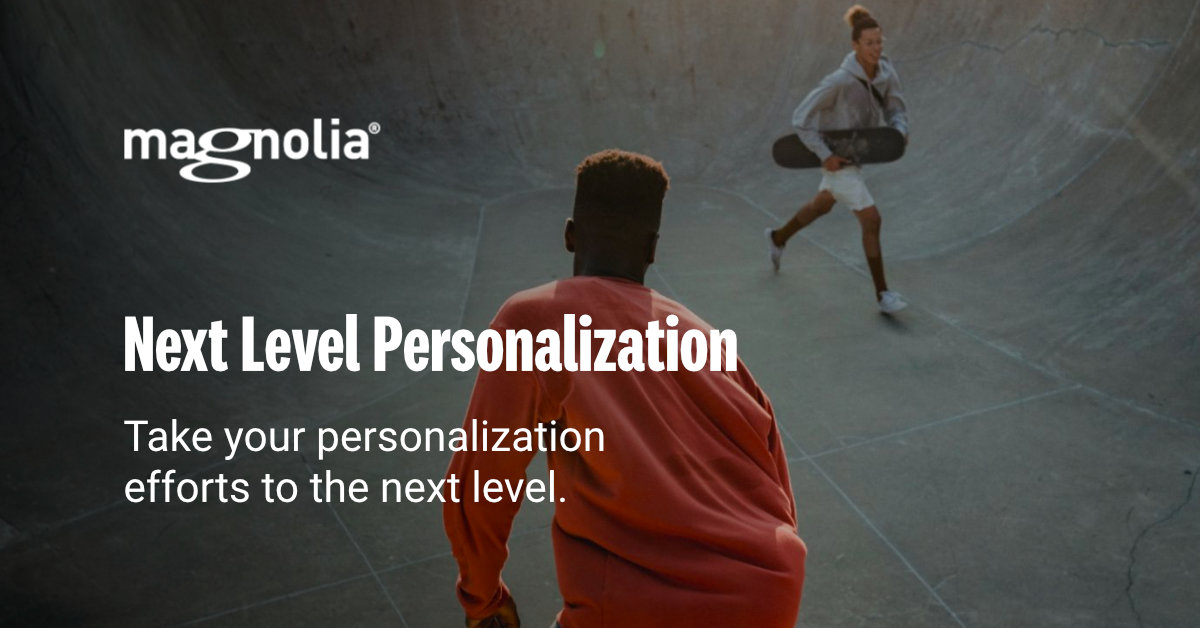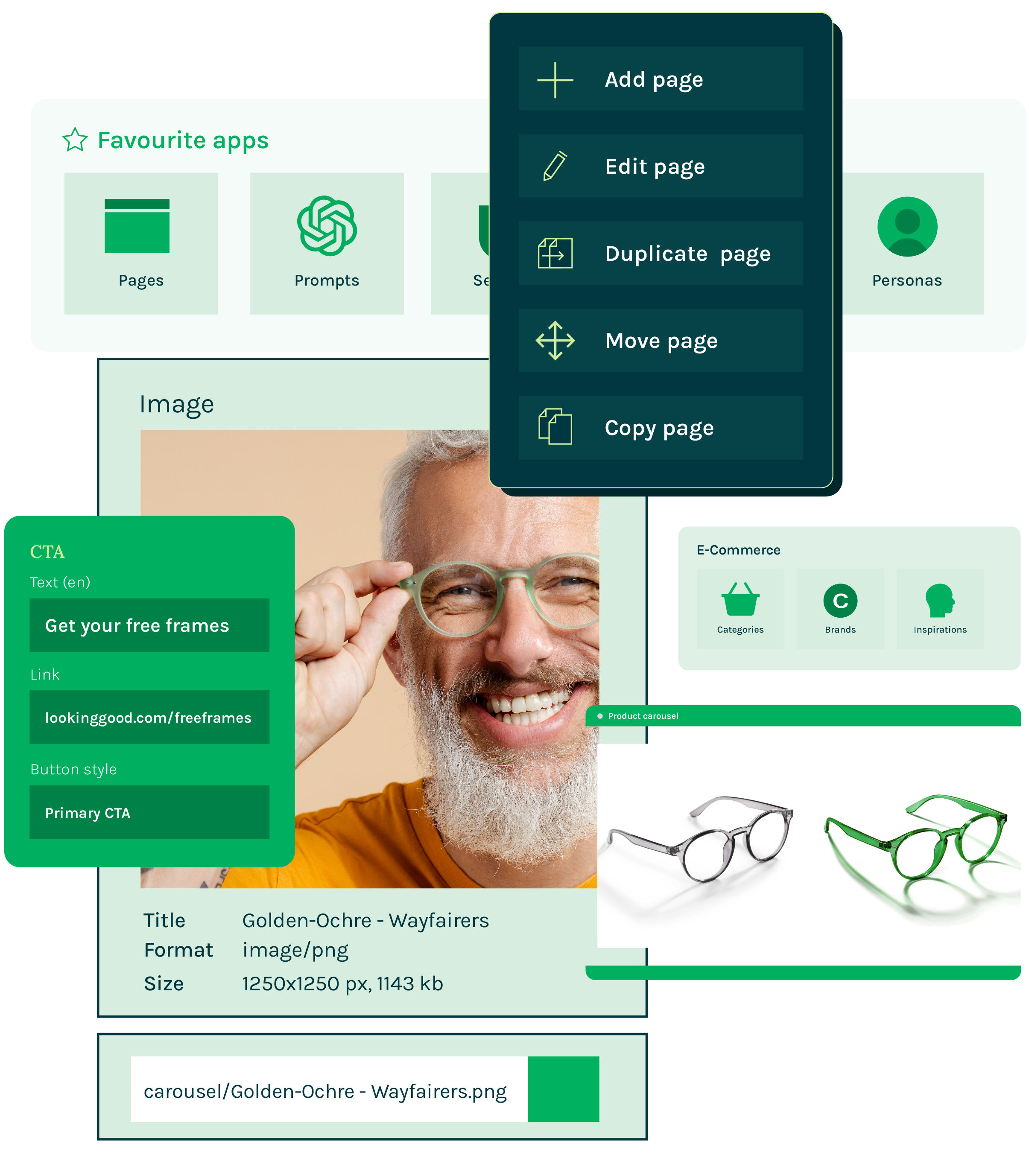So können Sie von der Personalisierung mit Magnolia profitieren
Erstellen relevanter Erlebnisse
Erstellen Sie für einzelne Besuchersegmente personalisierte Experiences, die zum jeweiligen Besucher, seinem Verhalten und dem aktuellen Weltgeschehen passen. Magnolia vereinheitlicht und nutzt Ihre Daten, um Ihre Website und andere digitale Kanäle auf Ihre Kunden zuzuschneiden und so die Customer Experience zu verbessern und die Konversionsrate und das Engagement zu erhöhen.
Personalisierung im großen Stil, für jeden Kanal
Magnolia ermöglicht die Omnichannel-Personalisierung und -Optimierung ganz ohne die Performance zu beeinträchtigen. Sie können personalisierte Experiences von Magnolia bereitstellen oder über unsere APIs personalisierten Content abrufen und so die Headless-Personalisierung an jedem Frontend ermöglichen.
Personalisieren, analysieren und optimieren
Magnolia bietet vorkonfigurierte Personalisierung und A/B/n-Testing und macht die Integration von Daten von Drittanbietern ganz einfach. Bringen Sie Content, Analytics und Kundendaten auf einem Bildschirm zusammen und erstellen Sie personalisierte und optimierte Experiences, die Ihre Kunden begeistern werden.












Personalisierung für jedes Frontend
Headless-Architekturen werden aufgrund ihrer Flexibilität immer beliebter. Die Frage ist jedoch: Lassen sich Headless und Personalisierung miteinander kombinieren?
Durchaus, mit Magnolia! Sie können benutzerdefinierte Frontends erstellen und personalisierten Content ganz einfach über unsere API abrufen.
So funktioniert‘s: Marketer und Content-Autoren erstellen mit dem visuellen Editor von Magnolia personalisierte Versionen einer Komponente, die auf spezifischen Merkmalen der Zielgruppe basieren. Entwickler fragen den Content ab, indem sie diese Merkmale bei ihrer API-Anforderung angeben. Das Ergebnis ist sauberer, personalisierter Content. So wird die Headless-Personalisierung zum Kinderspiel.

Optimization Integrations
All-in-One SEO, Accesibility und Content Quality Tools innerhalb von Magnolia - in einem nahtlosen Workflow.
Verbessern Ihres MarTech Stacks
Segmente
Definieren Sie Zielgruppensegmente anhand spezifischer Merkmale und erstellen Sie personalisierte Experiences für jede Gruppe, um die Relevanz des Contents und das Engagement zu erhöhen.
A/B/n-Testing
Erstellen Sie mehrere Versionen einer Seite und testen Sie, welche Version Ihre Zielgruppe bevorzugt. So können Sie die Performance Ihres Contents optimieren und mehr Besucher in Kunden konvertieren.
Marketing-Tags
Fügen Sie Snippets in Ihre Seiten ein, um Webanalysen zu sammeln und die Performance zu verfolgen, um bessere Einblicke zu erhalten und Zuordnungen machen zu können. Sie können auch Content von Dritten aus Social-Media- oder Anzeigennetzwerken einbinden.
Einheitliche Kundendaten
Integrieren Sie Ihre Marketing Automation, Ihr CRM oder Ihre CDP, um das Benutzerverhalten zu verfolgen und Kundendaten an zentraler Stelle zu erfassen. Auf diese Weise erhalten Sie eine 360-Grad-Ansicht Ihrer Kunden.
Analyse und Erkenntnisse
Binden Sie Ihre externen Analytics-Dashboards direkt in Magnolias Authoring-Schnittstelle ein und zeigen Sie Analytics-Daten im Kontext an, um Ihre Experiences zu verbessern.
Suchmaschinenoptimierung
Mithilfe der Diagnosen und Empfehlungen auf der jeweiligen Seite können Sie Ihren Content genau prüfen und seine Relevanz für SEO optimieren.
Unsere Customer Stories
Lesen Sie in unseren Fallstudien, wie unsere Kunden die Content-Plattform von Magnolia nutzen, um ihre Customer Journey zu verbessern und den Umsatz zu steigern.
FAQs
What is headless personalization?
Headless personalization is content personalization delivered through a headless content management system (CMS). With headless CMS architecture, content management and delivery are decoupled so that content can be managed and created without the constraints of the presentation layer. Headless personalization allows for more flexibility in the content delivery process and enables personalized content delivery to multiple channels and devices.
Are Magnolia's personalization capabilities headless-ready?
Yes, Magnolia's personalization capabilities are headless-ready. Magnolia provides a headless content delivery API that allows organizations to deliver personalized content and experiences to any channel or touchpoint, including websites, mobile apps, and IoT devices. Magnolia's headless capabilities enable organizations to decouple the content management and delivery layers, providing greater flexibility and scalability.
What is personalization in CMS?
Personalization in CMS (Content Management System) refers to the ability to customize content and experiences for individual users based on their behavior, preferences, and other data. Personalization refers to creating variants of content for different audiences, defining which audience segment should receive which variant, and also testing the variants (e.g., through A/B testing).
What are the different types of personalization?
Depending on the type of data used for personalization, there is implicit (i.e. data is captured by tracking the user’s behavior) and respectively explicit (i.e. data is provided by the user) personalization.
What is a popular method for personalization?
One popular method for personalization is rule-based personalization, which involves setting a set of rules or criteria for personalizing content based on user behavior or qualities. A good example is an ecommerce site that might use a rule-based system to suggest products based on a user's location, browsing habits, or past purchases.
What are the different types of personalized marketing?
There are several types of personalized marketing, including:
- Behavioral personalization involving data about a user's behavior, such as their browsing history and purchase history, to personalize marketing messages and recommendations.
- Demographic personalization based on data about a user's demographic profile, such as age, gender, and income, to tailor marketing messages and offers to their specific needs and preferences.
- Contextual personalization including data about a user's current context, such as their location, time of day, and device, to deliver relevant and timely marketing messages and offers.
- Collaborative personalization is created when users are asked to provide feedback and preferences to help personalize their experience.
What are the 4 R's of personalization?
- Recognize: The first step in personalization is to identify the user. This entails gathering and studying user data, including browsing habits, past purchases, and demographic data.
- Remember: As part of personalization, brands must also remember how users have interacted with them. In order to do this, information regarding a user's previous actions and preferences—such as product choices, past purchases, and search queries—must be stored and analyzed.
- Recommend: Another aspect of personalization is making pertinent suggestions for goods, services, or content based on user behavior and preferences. This entails utilizing data and analytics to provide recommendations for goods or information that the user is probably interested in.
- Relevance: Lastly, personalization should concentrate on providing the user with relevant experiences and messages. This entails distributing content, messaging, and offers through the appropriate channels at the appropriate times, all while being tailored to the user's needs and preferences.
What is Personalization vs Codification?
Personalization and codification are closely related terms. This is because personalization involves creating custom experiences for different users.
Personalization involves tailoring content and experiences to individual users based on their behavior, preferences, and other data points. Personalization aims to create a customized experience that feels unique and relevant to each user.
Codification involves creating standardized content and experiences that can be applied to a wide range of users. Codification aims to create a consistent and predictable experience that can be easily replicated across different touchpoints and channels.
What are the steps of web personalization?
The steps of web personalization typically involve:
- Data gathering: Personalization begins with gathering data about the user, including information about their browsing habits, search terms, and demographics.
- User segmentation: After data has been gathered, users can be divided into several groups based on traits or behaviors that they have in common. This makes personalization attempts more focused and pertinent.
- Content creation: Personalization also requires creating content that can be tailored to each user segment. This can involve creating different versions of a webpage, email, or other content asset that are customized for each segment.
- Personalization rules: Personalization rules specify how each user category should receive content. These guidelines may be determined by a number of variables, including user behavior, location, or device.
- Testing and optimization: Personalization efforts should be tested and optimized over time to ensure they effectively drive user engagement and achieve business objectives. This can involve A/B testing, multivariate testing, or other optimization techniques.
- Continuous improvement: Finally, web personalization is an ongoing process that requires continuous improvement and iteration. This involves analyzing data, monitoring user behavior, and adjusting personalization efforts as needed to ensure that they remain effective and relevant.




